Today we visited two of Antoni Gaudí’s creations, Park Güell and the Basilica of La Sagrada Familia.
Park Güell was initially planned as a residential development, but that didn't pan out because of the numerous restrictions that Eusebi Güell (the original landowner) and Gaudí wanted to place on new builds. Instead of the 60 homes planned, only three were ever built; a house for Gaudí, a house for Güell, and a third home purchased by a family whose descendants still use the property as a vacation home. Their financial loss was Barcelona’s gain, however, and the city benefited by purchasing the park and opening it to the public in the mid-1920's. It is now a UNESCO World Heritage Site and one of the largest green spaces in Barcelona. Gaudí designed the park to blend with nature so he didn't use any straight lines, including using tilted columns to make his tree-inspired stone archways. Along the park's main pathway are 59 large balls, the same number as beads on a rosary. Gaudí was a devout Catholic and walked the path each morning saying prayers on his way to work on other buildings, such as La Sagrada Familia, which we saw later in the day.

Bridge designed for carriages on top and walkers underneath

Curving walkways

Antoni Gaudí's house
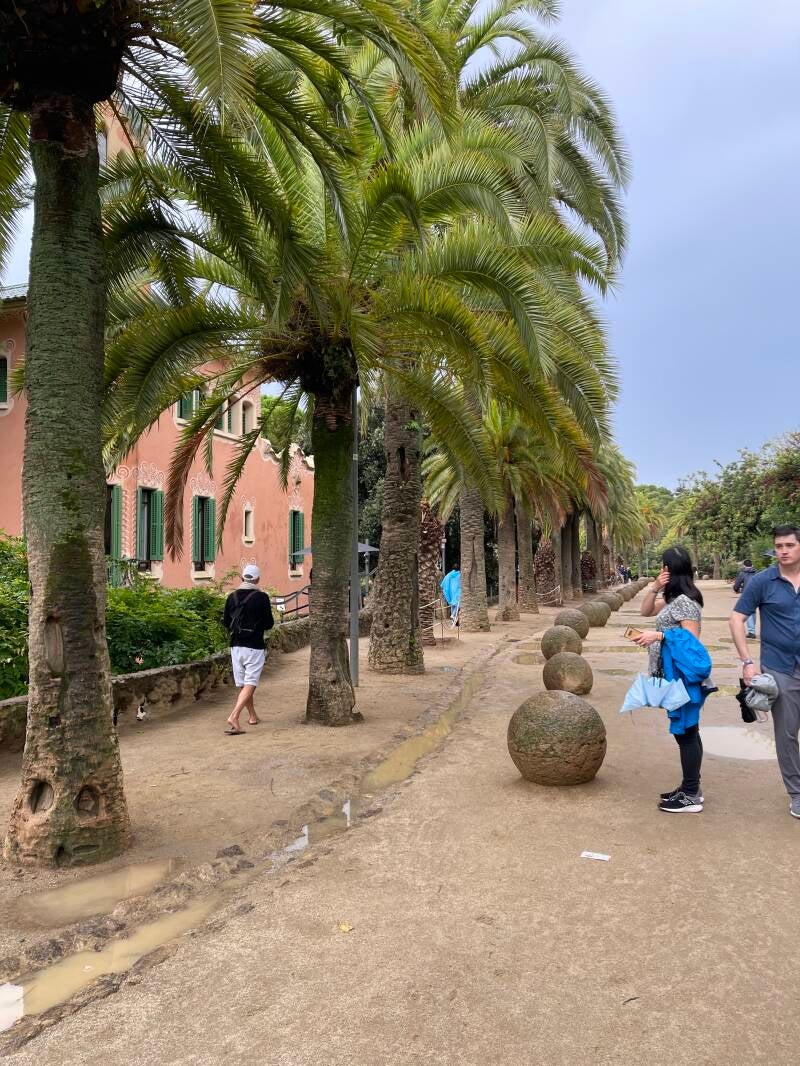
Rosary bead balls

The park center was originally designed to be a covered marketplace, with mosaics on the wavy ceiling, and columns throughout. Despite only having 86 columns, they call this spot the “100 column hall.” Above this is a terrace lined with a mosaic covered bench, designed so that it would be comfortable against your back, and curving around in ways that are supposed to encourage people to be social. There are spots on the bench where the curve is such that you can wind up sitting face-to-face with the next person seated on the same stretch. From the bench you could see an open area designed like a Greek Theatre, with the Barcelona skyline as a backdrop. The bench was wet due to rain so we didn't sit, but we still enjoyed the beautiful views!

Hall of columns

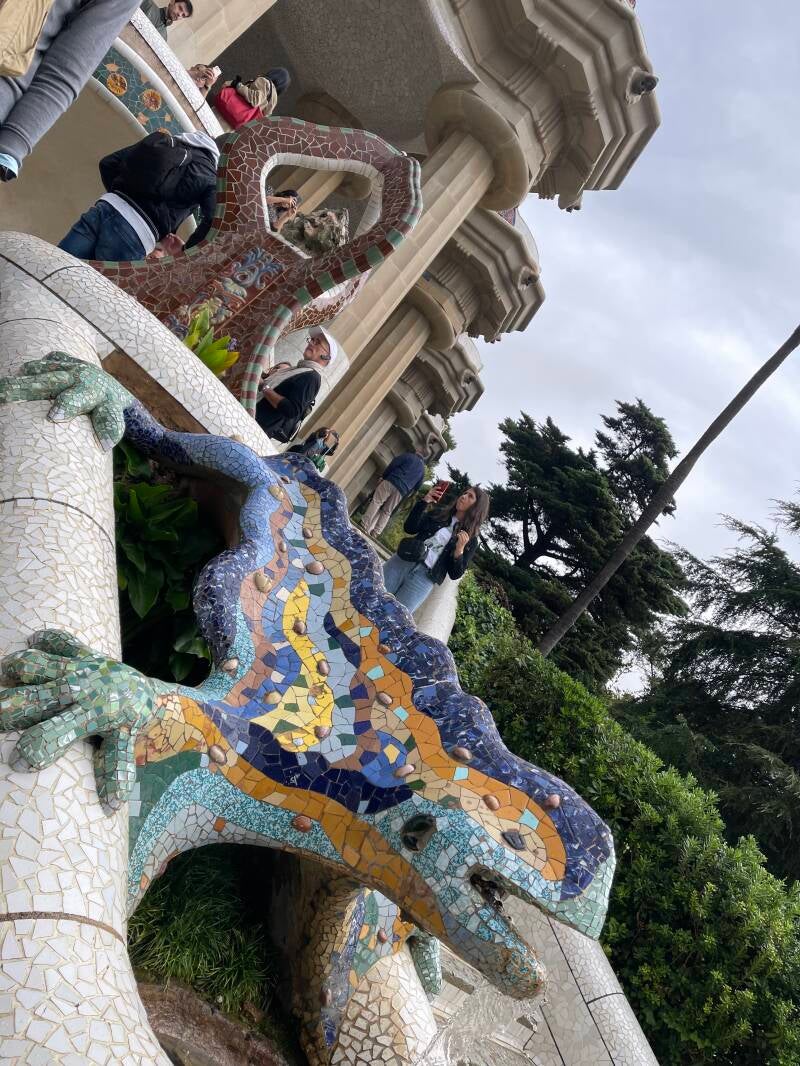
Barcelona Dragon at hall entry


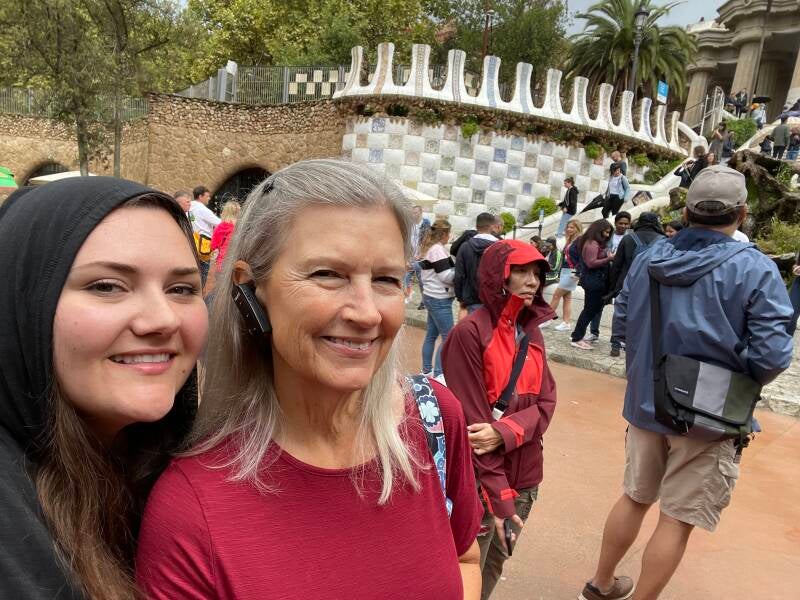

Curving walkway to terrace

Washing woman

Gaudí's mosaics used pieces of items from throughout the city
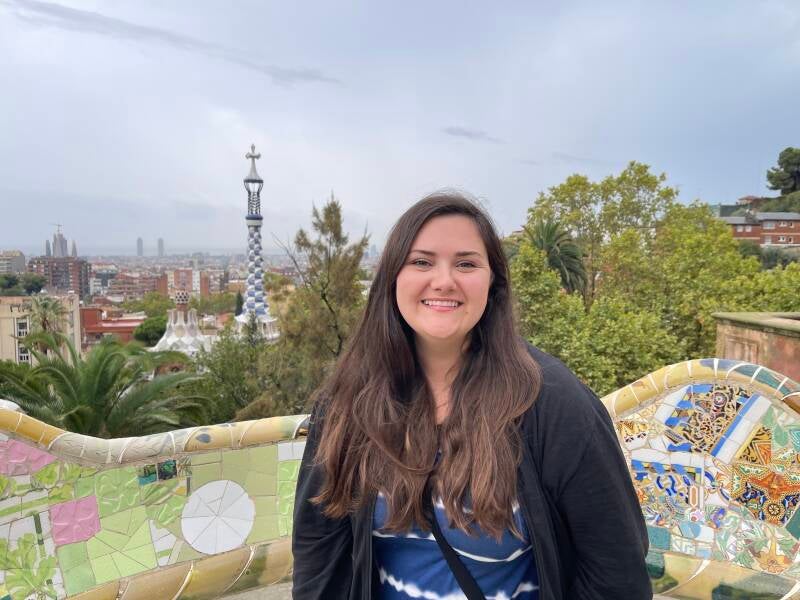

After a lunch of our very first paella (mine was seafood, Courtney’s was vegetarian), we decided to head over early to our next Gaudí masterpiece. We had a little time to kill after we took our first photos from a distance, because tickets for entry are timed. So we went on a hunt of the surrounding streets for an open shoe shop! Courtney had been slipping some on the stones and sidewalks in the rain, so she decided that her big souvenir from this trip was going to be the shoes we found in what might have been a secondhand shop a few blocks from the basilica. She lucked into a good pair and says she’s probably going to end up flying home in them. We definitely made much better time walking back after she made the switch!

Courtney's paella with a prawn from mine
Begun in 1883 and built solely from donations, work continues today on the Basilica of La Sagrada Familia. All the other basilicas we visited were centuries old, and had detailed statues and imagery from the Bible inside the buildings. However, all of this was on the outside at the in-progress Sagrada Familia because it was designed to allow people to partake of the Bible every time they pass the exterior of the building. We entered through the Nativity facade, where the sculptures and stone details depict the whole story of the coming of Jesus, with the final scene of Joseph leaning protectively over the Virgin Mary and the baby Jesus. Inside, the sky-high columns and archways resemble a forest. I feel like we’ve spent so much of this trip looking up! Light enters the basilica through the stained glass windows (blue and green on the side of the Nativity and orange and red on the side of the Passion), but also through skylights. Inside you get a feeling of awe and peacefulness. Our tickets included an app with an audio tour that took us all through the sanctuary, and we were planning to climb the outer Nativity Tower, but the rain meant it was closed for safety concerns. Next time for sure!

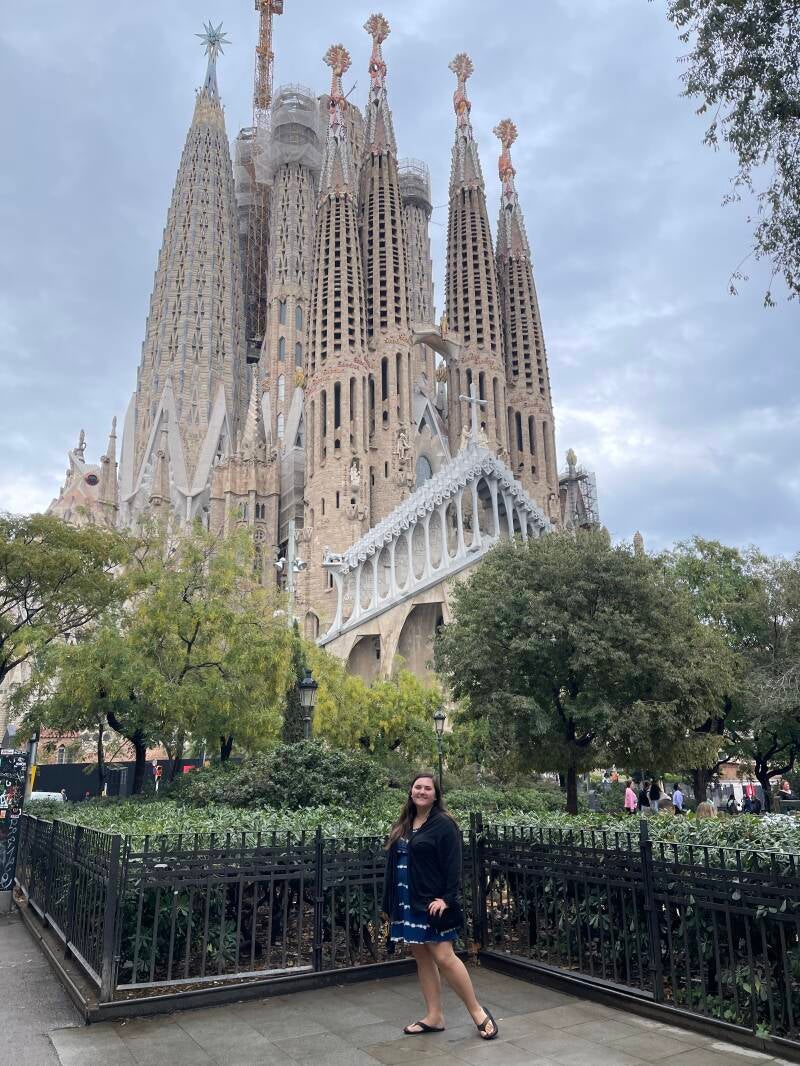
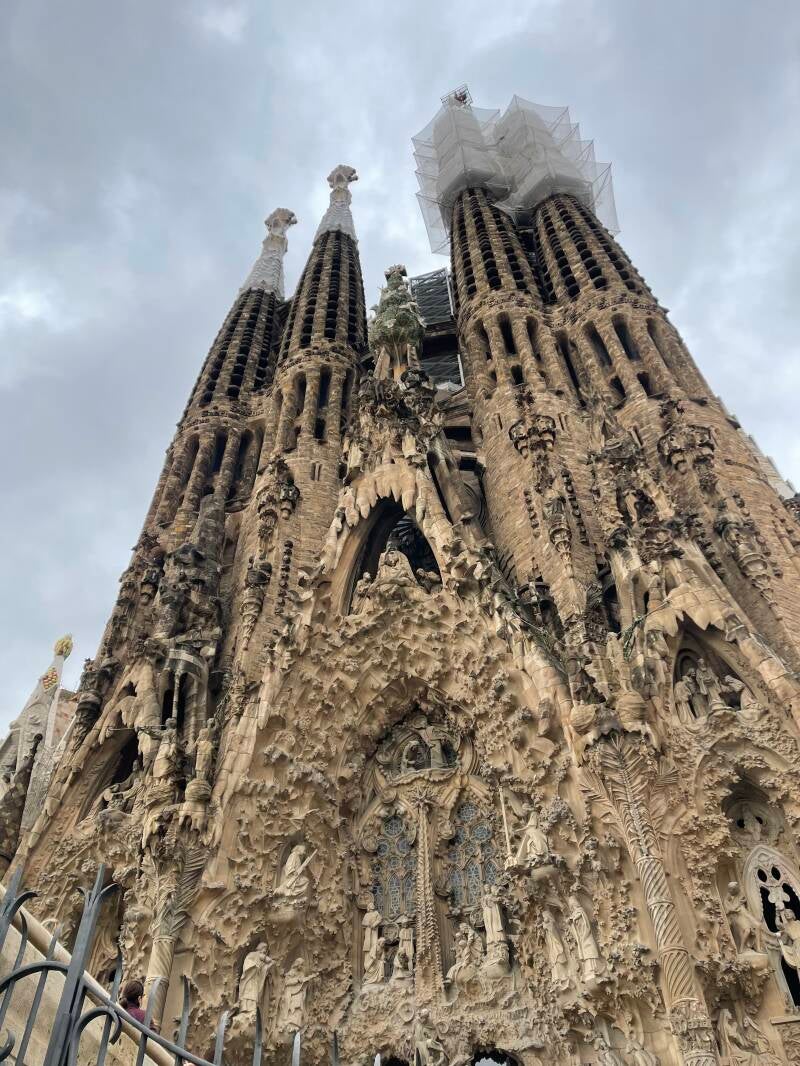
Entry at Nativity Facade

Cloisters

Vaulted ceilings with skylights


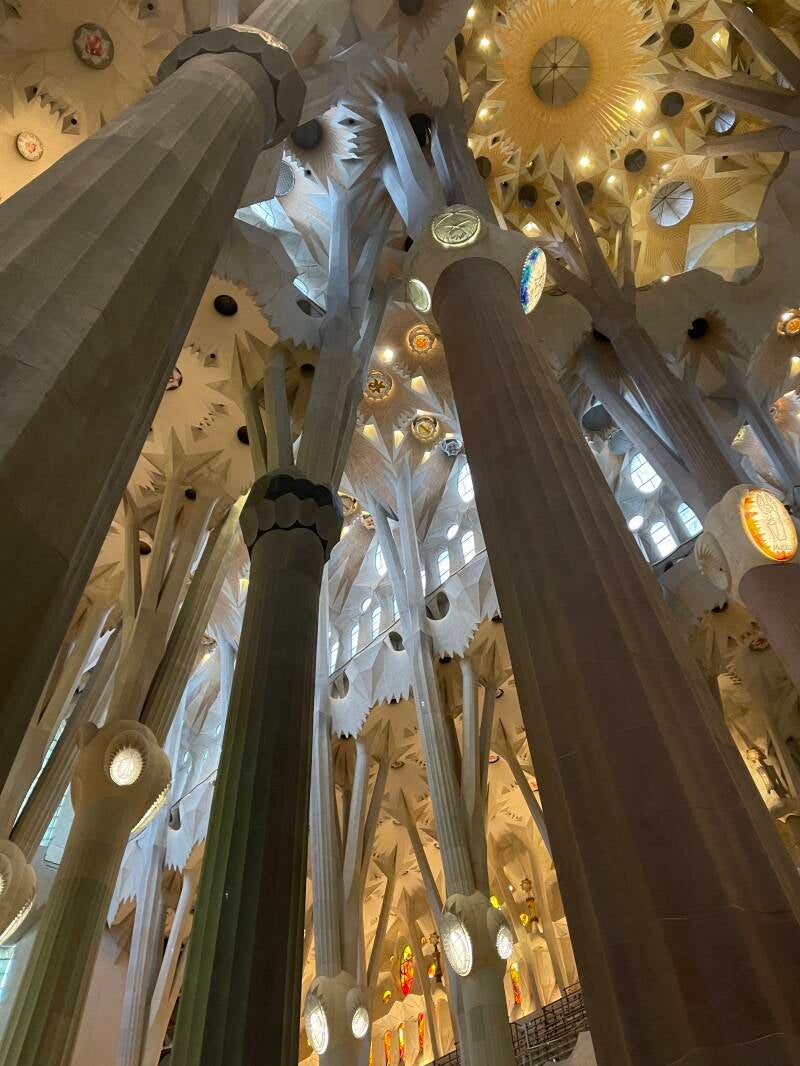



Saint George
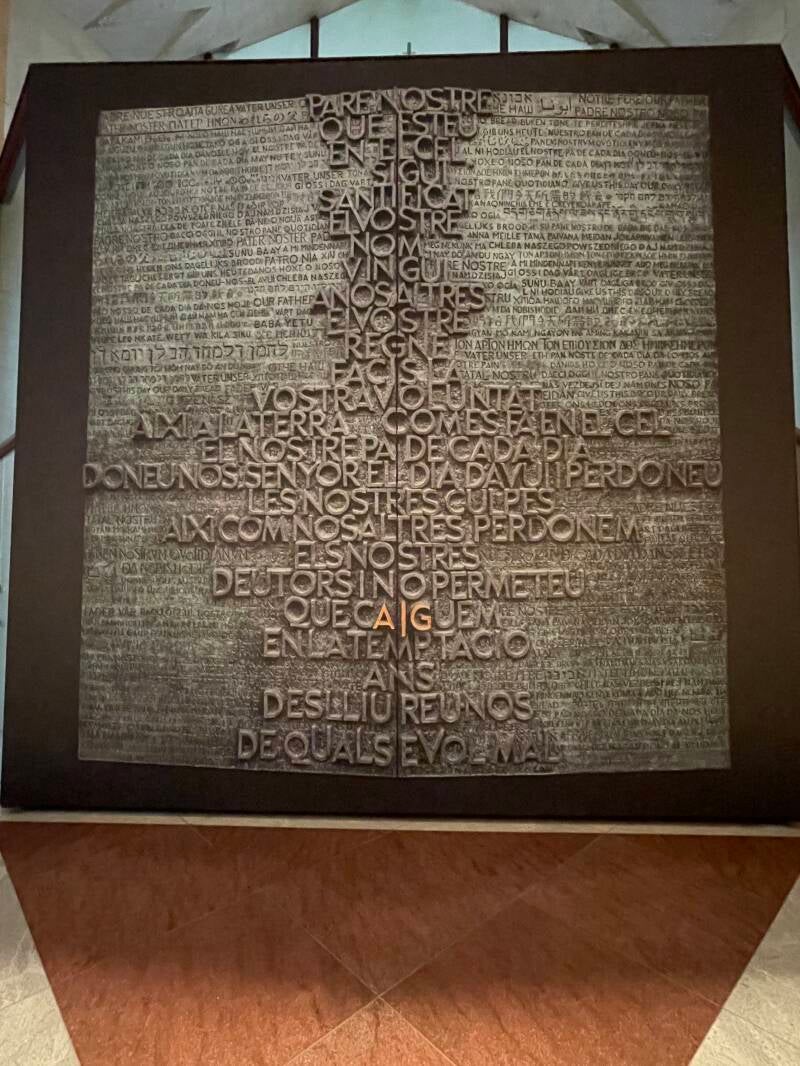
The Lord's Prayer in Catalan

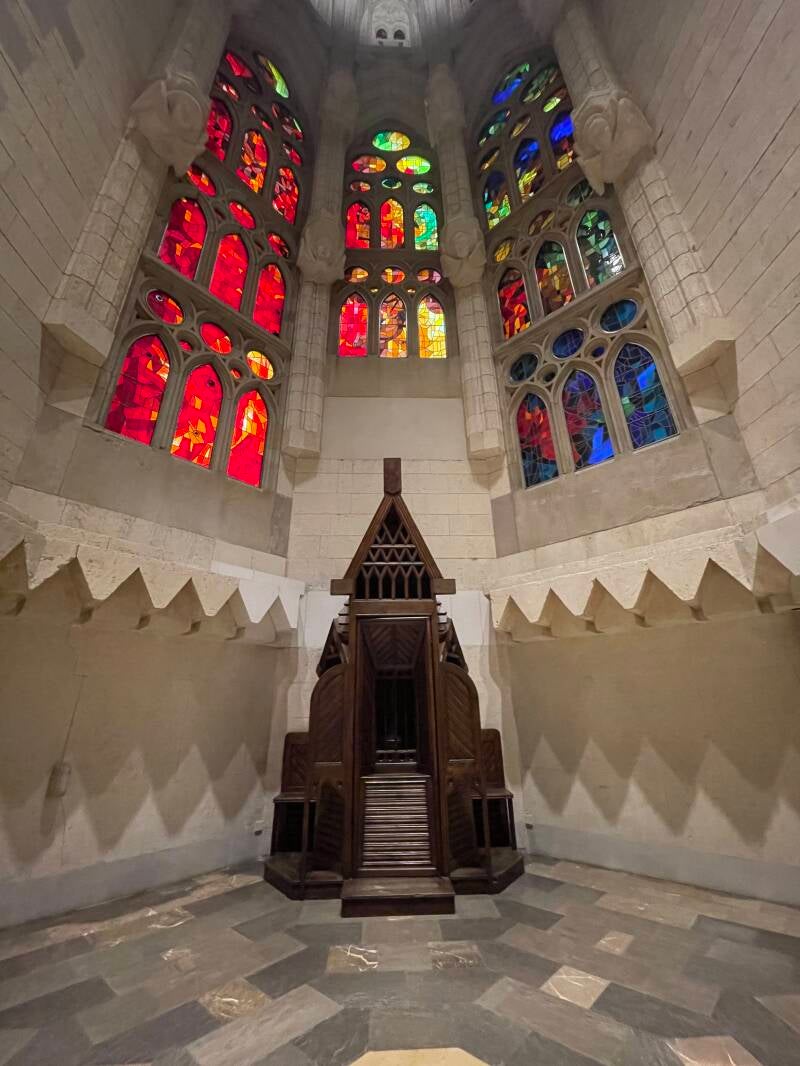
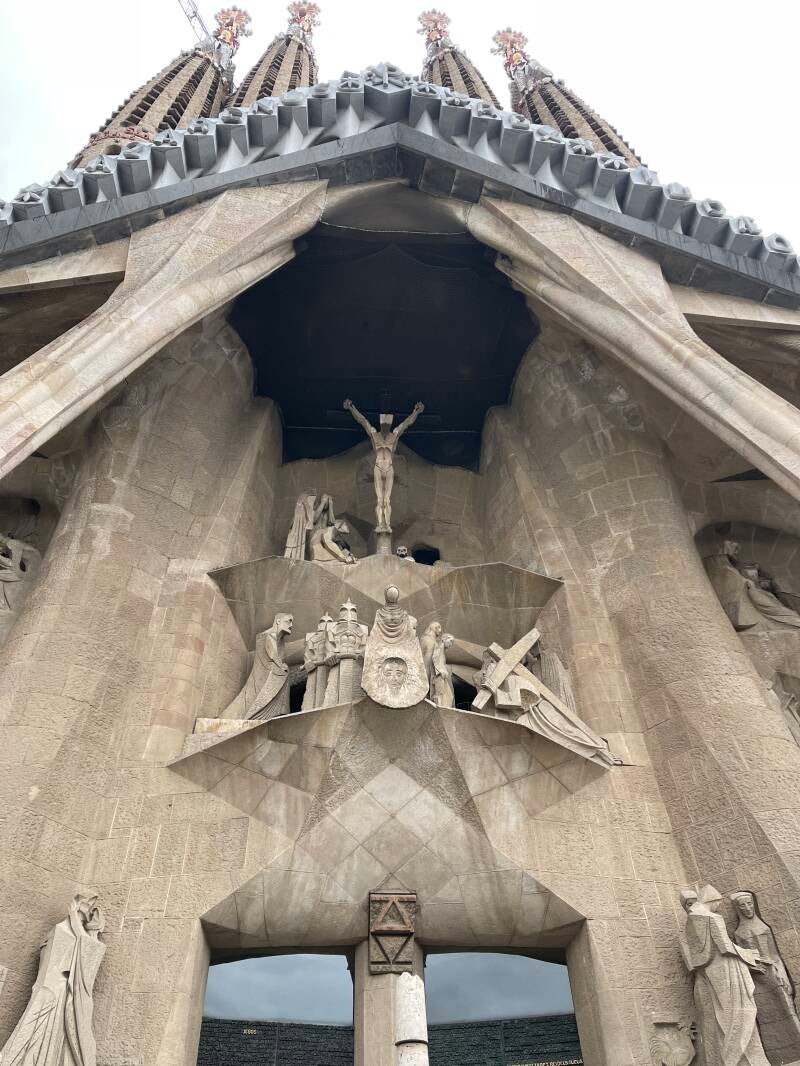
Passion Facade with Jesus's face sculpted by Josep Maria Subirachs that follows you as you walk (like the sculpture we saw at Montserrat)

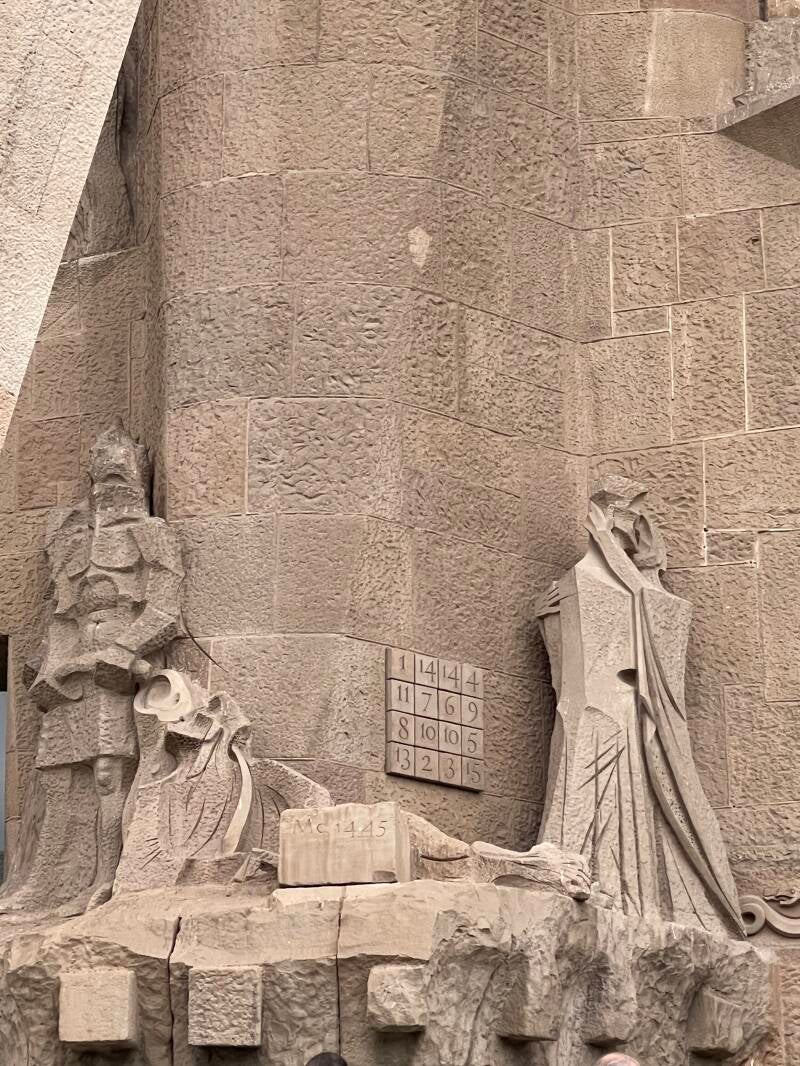
Kiss of Judas

Nativity Facade

